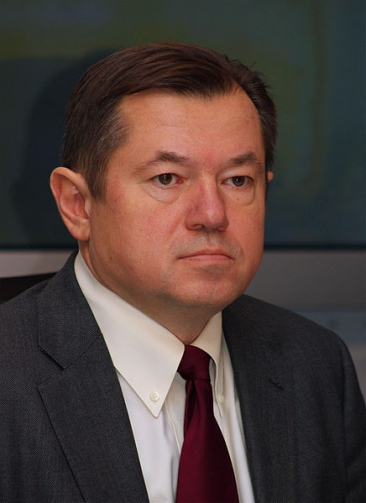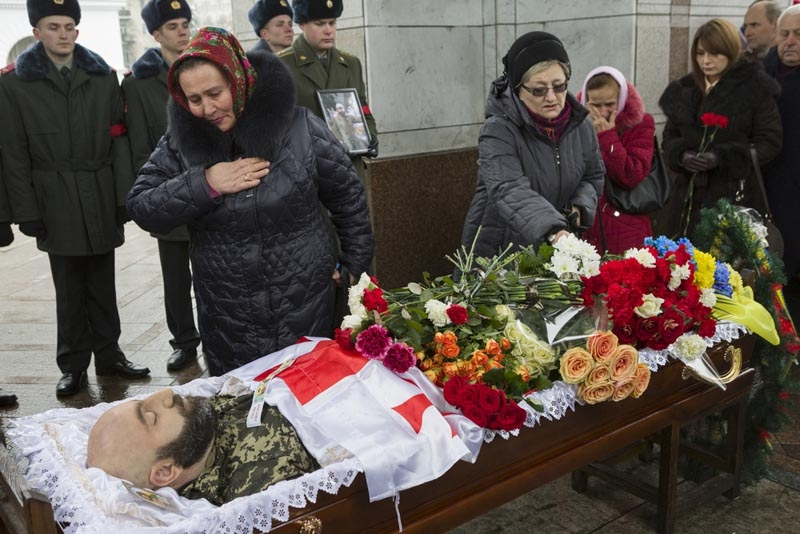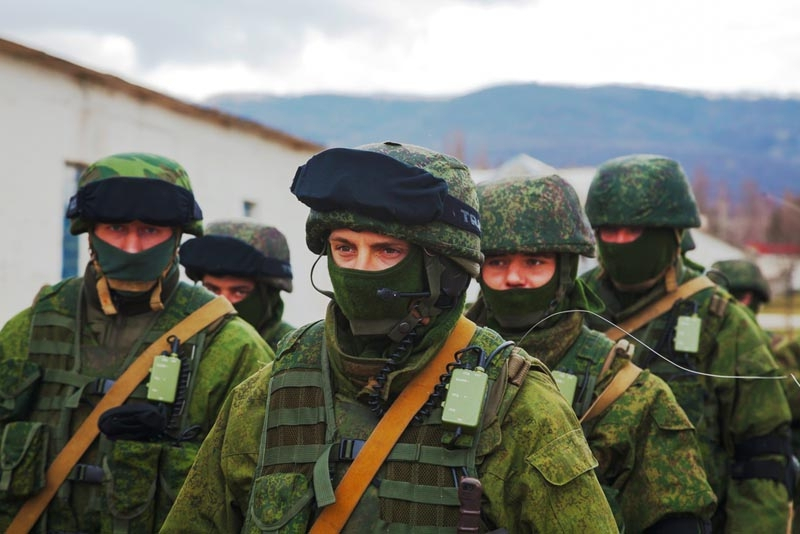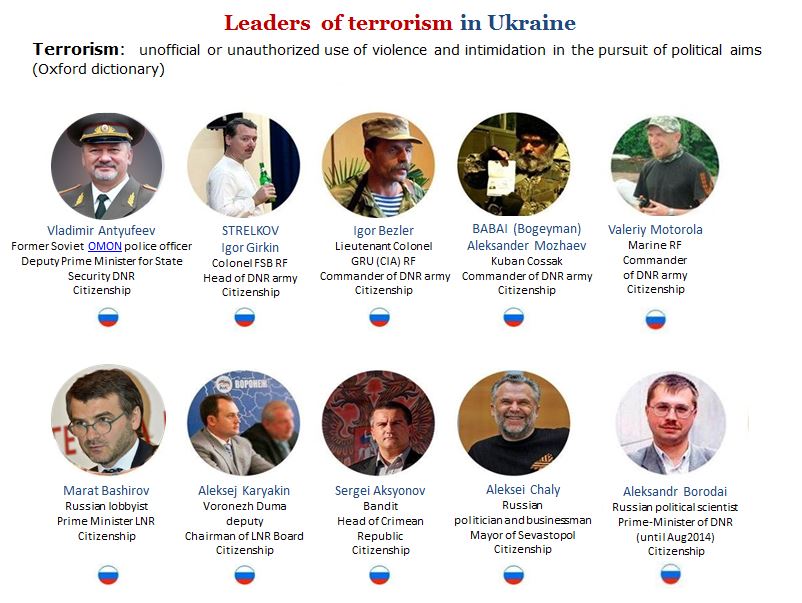What are the origins of the armed conflict that has been raging in eastern Ukraine since 2014? Which role did Russia play in the emergence and escalation of the originally unarmed confrontation, in the Donets Basin (Donbas), after the victory of the Euromaidan revolution? When, how and to what degree exactly did Moscow get involved? Which relative weight did local sources of the conflict have when compared to the impact of foreign factors, i.e. the Kremlin’s covert actions in Ukraine?

These and similar questions are not only academic topics hotly debated in Ukraine and the West. The way one answers them will also have far-going implications for Western thinking, policies and diplomacy with regard to Russia and Ukraine, during the next years. Recently, new evidence and research has emerged that is clarifying the picture.
For instance, Russia-watchers have been lately intrigued by a leak of emails sent and received by the office of Vladislav Surkov, an official adviser to President Putin, responsible for Russia’s policies towards Ukraine and the Moscow’s satellite states in northern Georgia. The Surkov Leaks have renewed the discussion of Moscow’s involvement in the pseudo-civil war and emergence of ‘people’s republics’ in eastern Ukraine. These leaks confirm once more that the armed conflict in Ukraine’s eastern Donbas is, to large extent, a Kremlin project. It is merely one part of Moscow’s broader policy of undermining the Ukrainian state after the victory of the Euromaidan revolution in February 2014.
Watch: “We have no need for CIA help” – Ukrainian hackers of #SurkovLeaks | Exclusive interview
Yet, while the Surkov Leaks provide important additional documentation, they do not alter, in principle, our understanding of the Russian-Ukrainian conflict. They confirm with details and they support with empirical proof earlier mainstream interpretations of the nature of the armed conflict in the Donbas as a covert Russian invasion of Ukraine. Two months earlier, another leak did, however, provide evidence that has or should have questioned earlier interpretations of the genesis of the tensions in eastern and southern Ukraine. They deal with the prehistory of the events that eventually led to the start of the still ongoing low-intensity war in the Donets Basin, in April 2014.
New evidence of Russian involvement
In August 2016, Ukraine’s General Procurator published a video tape containing illustrated and annotated audio recordings of a number of conversations between Sergey Glazyev, a Russian Presidential Advisor (an official governmental position), and several Russian as well as Ukrainian pro-Kremlin activists located or living in Southern and Eastern Ukraine. These dialogs were recorded in late February – early March 2014. They vividly illustrate Moscow’s covert support for anti-governmental protests in Ukraine’s russophone regions following the victory of Euromaidan on 21 February 2014.
Read more: Ukraine publishes video proving Kremlin directed separatism in eastern Ukraine and Crimea
The tapes reveal the involvement either of the Russian state itself, or of a formally non-governmental Russian group directed from the Kremlin in the initiation, coordination and financing of separatist meetings, demonstrations, pickets and similar actions on Crimea as well as in various regional capitals in Ukraine’s eastern and southern parts immediately after Euromaidan.
Putin’s advisor Glazyev, for instance, on 1 March 2014 informs his interlocutor Anatoliy Petrovich in the south-east Ukrainian city of Zaporizhzhia: ‘I have an order to raise everybody, to raise the people. People should gather on the square [of Zaporizhzhia] and demand to turn to Russia for help against the Banderites [derived from the name of Stepan Bandera – a war-time Ukrainian ultra-nationalist who fought against, among others, Soviet power and was killed by a KGB agent at Munich in 1959]. Specially trained people should throw out the Banderites from the regional council’s building. Then they should arrange a meeting of the regional council, create a regional executive committee, give it executive power and subordinate the police to this new executive. I have direct orders from the leadership [of Russia] – to raise the people in Ukraine wherever we can. That means we have to bring people to the streets, as we did in Kharkiv – according to this example! And as soon as possible! Because, you see, President [Putin] has already signed a [presidential] decree. The operation has already began, there is information that the troops are already moving out. What are they waiting for? We can not do all this with [military] force. We use force only to support the people – nothing more! But if there are no people, what support can there be?’
Ignored in the West
While the tapes became a big issue in Ukrainian media and caused an angry reaction in Moscow, they have been largely ignored by Western newspapers and think-tanks. Mostly, they were – if at all – mentioned only en passant in reports about Ukraine of that time, by European and American journalists and researchers. Their Russian contents were, to be sure, quickly translated into English and annotated with supplementary information by the Ukrainian analytical website UA Position. Yet, so far, only few observers have made these tapes a prime topic of their analyses of the Kremlin’s start of a Russian hybrid war against Ukraine.

This may have been partly due to the fact that the Ukrainian General Procuracy office has still not published the raw recordings out of which the annotated public tapes were composed. Some may suspect that the published records were tampered with, or/and that they do not reveal the full story of the events they are supposed to illustrate. It is, however, unlikely that these recordings are mere fakes. The published conversations are interactive and made by interlocutors whose voices can be easily ascribed to persons, on the basis of their audible statements recorded in video material published elsewhere. The Kremlin would have already published proof for any manipulation, if they had taken place. Nor has there been any other public questioning of the genuineness of these audio documents.
The continuing international inattention for the Glazyev Tapes was and is surprising. If they are indeed authentic, the Glazyev Tapes should modify our understanding of the origins and nature of the Russian-Ukrainian conflict. The most important aspect of the Glazyev Tapes is arguably not their contents. What is remarkable about these conversations is the time of their recording in February-March 2014, i.e. several weeks before the post-Euromaidan civil conflict in eastern Ukraine turned into a pseudo-civil war in the Donbas.
Until the publication of the Glazyev Tapes, the prevalent interpretation of the roots of the Russian-Ukrainian War was that Moscow intervened – with, first, paramilitary and, later, regular military forces – into an escalating confrontation between pro-Kyiv and pro-Moscow Ukrainian citizens of the Donets Basin. To be sure, few serious observers ever doubted the Kremlin’s crucial role in turning these initially unarmed – though often already violent – winter confrontations on the streets of the east and south Ukrainian cities into a putatively civil war in spring 2014. Yet, there was still a debate among Ukrainian and foreign observers of these events about the character of the pro-Moscow protest actions that had preceded, and supposedly led to, the escalation of armed violence.
Even many ‘russocentric’ interpreters of the confrontation in Ukraine’s eastern Donbas conceded that the cultural-regional differences between Ukraine’s russophone east and south, on the one side, and ukrainophone west and bilingual center were the predominant cause of the tensions in such Russian-speaking cities as Kharkiv, Luhansk, Donetsk or Odesa, after the Euromaidan. The post-revolutionary anti-Kyiv grass-roots activities of many Russian-speakers in Ukraine – such was the story – led to their confrontation with the new pro-Western and nationally oriented leadership that came to power as a result of Euromaidan. The local tensions, so it seemed, led to a conflict in the Donbas that the Kremlin eventually felt – depending on the interpreter – obliged, forced or convenient enough to intervene in.
Destabilize russophone regions
To be sure, the evidence contained in the Glazyev Tapes does not nullify the factor of Ukrainian inter-regional strains (not a particularly unique characteristic of Ukraine, in any way) in the emergence of the Donbas conflict. In fact, the conversations published do not concern the Donbas, but other regions in russophone Eastern and Southern Ukraine. One can only infer from these recordings that similar Russian mingling was happening in the Donbas too, and that the now documented involvement of the Kremlin in certain locations is merely the tip of a larger iceberg.
The Glazyev Tapes could, in fact, be seen as strengthening the argument about the relevance of regional differences within russophone Ukraine – and old theme in post-Soviet sub-national studies. They indicate that Moscow was engaged in a broader attempt to destabilize the russophone regions of Ukraine, but was only able to instigate a pseudo-civil war in the Donets Basin. Russia’s informal influence was, however, not strong enough to do so in other Russian-speaking regions in which Glazyev with his local partners, as the tapes proof, actively supported secessionist tendencies. The leak could be thus read as evidence for earlier interpretations emphasizing the crucial role of specific regional factors in Ukraine’s break-up.

Yet, the time of the recording and documented depth of Glazyev’s involvement in these Ukrainian events also support a different narrative. They imply that Russia was by no means merely an additional third actor or late intervening factor when the protests turned massively violent and led to the first armed skirmishes, in April 2014. Rather, the Glazyev Tapes indicate that Moscow had been already entangled in the still largely unarmed protests across eastern and southern Ukraine immediately following the victory of the Euromaidan, in late February and early March 2014.
The Kremlin had been behind at least some separatist activities several weeks before the actual war started. Yet, Moscow’s clandestine pre-war activities remained remarkably unsuccessful in mainland Ukraine, in late February and early March 2014. Surprisingly, the distinctly weak Ukrainian state – just shaken by a full-scale revolution – was still strong enough to resist Russia’s clandestine non-military assault on its sovereignty and integrity, at that point. The only partial exclusion, in late February 2014, was Crimea where – as we already know – Russian special forces played a crucial role in starting the secession process.
Political pretext for Novorossia
The genealogy of the Russian-Ukrainian conflict appears, after the publication of the Glazyev Tapes, somewhat different than before. It looks now as if Moscow or, at least, a part of the Russian leadership was, in late February 2014, starting a comprehensive attempt to annex not only Crimea, but also large chunks of mainland southern and eastern Ukraine, i.e. to create a Novorossia (New Russia). Yet, in order to do so, pro-Russian local activists had first to produce some legal or/and political pretext for an official Russian military intervention.
An employment of Russian troops abroad had just been made (domestically) legal by a special Federation Council resolution adopted on 1 March 2014 granting the President the right ‘to use Russian military forces in Ukraine to improve public and political situation in that country’ (– a right revoked in June 2014). Yet, for the Russian public and international audiences, it still needed a weighty justification for such expansionism coming from inside Ukraine. To this purpose, an – at least seemingly – official document or particularly grave political event would first have to appear in the respective Ukrainian region up for invasion, and to provide some basic fodder for the Kremlin propaganda machine. Such an initial move in this or that Ukrainian region could have then been spun by Russian media as providing sufficient legitimacy for preparing and conducting an armed ‘humanitarian’ intervention by Moscow on Ukrainian territory – and to finally annex the occupied areas either formally or informally.
This scenario materialized more or less on Crimea. Glazyev’s conversations with the Russian imperialist politician Konstantin Zatulin and Crimean pro-Russian separatist Sergey Aksyonov, on the tapes, illustrate some of the particulars. Yet, even in [the Crimean capital] Simferopol, the crucial session of the Autonomous Republic’s parliament that initiated Crimea’s secession had to be assembled and made to vote with the help of Moscow’s paramilitary forces, as one of their members, notorious Igor Girkin (‘Strelkov’), professed in a later interview.

Something similar – as the Glazyev Tapes indicate – was also tried or, at least, intended in Kharkiv, Odesa and other cities. Yet, the hoped-for Ukrainian calls for Russian help did not come about as planned, during the first few weeks after the Euromaidan. The following ‘civil war’ that only began more than a month later in the Donets Basin was seemingly Moscow’s Plan B. It may have been an altogether improvised scenario that spontaneously grew out of the initially unarmed, yet abortive subversion of the Ukrainian state by Russia-directed activists, in late February and early March 2014. More revelations and research will be necessary to fully verify, further specify and properly document this course of events.
Kremlin was fanning protest
Still, the Glazyev Tapes now provide first direct evidence for what earlier empirical research – by, among others, Nikolay Mitrokhin, Viacheslav Likhachevand Anton Shekhovtsov who focused on the Russian far right’s role – had already indicated. At least one important circle within the Kremlin was already actively fanning the East Ukrainian social conflict several weeks before it was replaced by a covert Russian paramilitary invasion. Whereas Mitrokhin, Likhachev and Shekhovtsov emphasized the ultra-nationalist ideological motivations of the Russian or Russia-supported activists in Eastern Ukraine, the Glazyev Tapes illustrate the financial remuneration that the Kremlin or a Kremlin-directed group provided to the pro-Moscow ‘anti-fascists’.
To be sure, one could have suspected something like this already before the Glazyev Tapes were published. There had been two obvious contradictions in the ‘ukrainocentric’ narrative of the origins of the conflict in the Donbas: First, comparative regional studies have emphasized some peculiarly ‘uncivil’ traits of society in the Ukrainian Donbas. Ukraine’s easternmost population has been characterized as relatively more pro-Soviet and patriarchal than people in many other Ukrainian regions. After Ukraine’s assumption of independence in 1991, the Donbas’s crucial social, political and economic structures were, moreover, largely captured by the semi-criminal Donetsk clan and its political wing, the Party of Regions of president Yanukovych.
Against this background, it was, in spring 2014, remarkable how well and sudden the most Soviet-nostalgic sections of the Donbas’s society managed to seemingly self-organize a large anti-governmental protest without much (official) help from the dominant regional Donetsk clan. Even before the Glazyev Tapes appeared, this story – implicit in the civil war narrative of the Russian-Ukrainian conflict – looked, at least, incomplete.
Second, while the pre-conflict Ukrainian Donbas was characterized by certain socio-cultural pathologies, it still had a functioning and structured social life. Like any other modern populated region in the world, the Donets Basin had, before Russia’s covert intervention, a multitude of established and interlinked political, industrial, educational, cultural and other institutions with formal heads and informal leaders known to all or large parts of the Basin’s citizenry.
Yet, when the Donbas ‘uprising’ started in spring 2014, not a single widely known local dignitary seems to have visibly taken part in it – not to mention, led it. Although the Donbas had – like any other society – regionally prominent politicians, journalists, doctors, entrepreneurs, writers etc., apparently none or very few of the Luhansk and Donetsk notabilities chose to become, if not a leader, then at least an open participant of the 2014 so-called ‘Russian Spring’.
The only prominent Ukrainian politician ever officially involved with the putative insurrection in the Donets Basin was Oleg Tsarev, a notorious member of Ukraine’s pre-Euromaidan parliament (who had, during the uprising of winter 2013-2014, tried to deport approximately three dozen foreigners, including myself, from Ukraine). Tsarev became for a while the speaker of the joint and by now defunct Novorossia joint parliament of the so-called Luhansk and Donetsk People’s Republics. However, Tsarev is not from the Donbas, but from the neighboring Dnipro oblast – perhaps, the country’s most staunchly pro-Ukrainian russophone region. Instead, the leaders of the Donbas putative uprising and so-called ‘People’s Republics’ were either Russian citizens, like the prolific ultra-nationalists Igor Girkin [the first ‘minister of Defense’ of the People’s Republic of Donetsk] or Aleksandr Borodai [a Moscow consultant, the first prime minister of the republic], or hitherto un- or little known representatives of the Donbas – some of them, like the first Donetsk ‘People’s Governor’ Pavel Gubarev, also Russian ultra-nationalists.
Read more: Don’t call terrorists in eastern Ukraine “rebels” because they are not

The Glazyev Tapes contribute to explaining the reasons for these contradictions. The allegedly popular insurrection in eastern and southern Ukraine was from its beginning in late February 2014 an undertaking meticulously guided and heavily supported from Moscow. The Russian Spring in the Donbas did thus not need an active local civil society. As political leadership and resources were provided by Moscow, an involvement of regional notabilities was not necessary for the rebellion to happen.
Repercussions for Minsk
This interpretation should not only modify public narratives of the ‘Ukraine Crisis’, but also have repercussions for the Western approach to the Minsk Agreements. In particular, the West should re-consider its insistence on Ukraine’s soon fulfillment of the political parts of the Minsk Agreements. Not only is it obvious that Ukraine was forced to accept enormous political concessions to Moscow against the background of extremely bloody Russian military offensives, during the negotiations of both Minsk Agreements in September 2014 (Ilovaisk) and February 2015 (Debaltseve).
The Glazyev Tapes also illustrate that the social rationale for far-reaching new political rules in the Donbas envisaged in the Minsk Agreements – a considerable reduction of Ukraine’s sovereignty, in the currently occupied territories – is slim. A popular Western interpretation of the concessions to the separatists in these Agreements had been that the mere fact of an, at least, initially grass-roots insurgency in the Donbas should be somehow reflected in its future status. Yet, the Glazyev Tapes illustrate that the entire East Ukrainian uprising was from its start not as popular a phenomenon as it earlier seemed. If one acknowledges the Russian involvement in, and imperial rather than local dimension of, the insurgency, then the apparent compromise in the Minsk Agreements assumes a different notion.
Related: Meet the people behind Novorossiya’s grassroots defeat
The Minsk compromise appears now not any longer as a result of Ukrainian and Western consideration of certain peculiarities of the Donets Basin. Rather, a future special status of the currently occupied territories looks, after the publication of the Glazyev Tapes, as a strange reward for the partial successes that Russia had in fueling otherwise weak separatist tendencies in eastern Ukraine following the victory of the Euromaidan. Ukraine has been undergoing a general decentralization drive since 2014 – a development unrelated to the Minsk process and a direct result of the victory of Euromaidan.
A special status for the currently occupied territories, as foreseen in the Minsk Agreements, is thus redundant. All regions of Ukraine are or will be acquiring new rights, additional responsibilities and greater autonomy. If the now Moscow-controlled territories return under Kyiv’s control, they would benefit from general Ukrainian decentralization. It is less the Donbas’s specific regional interests than the partial successes of Russia’s secret subversion efforts that has found their way into the texts of the two deals between the Ukrainian government and the separatist pseudo-republics in Minsk. The West should treat the questions of whether, when and how Kyiv needs to implement the respective domestic political articles of the Minsk Agreements accordingly.


